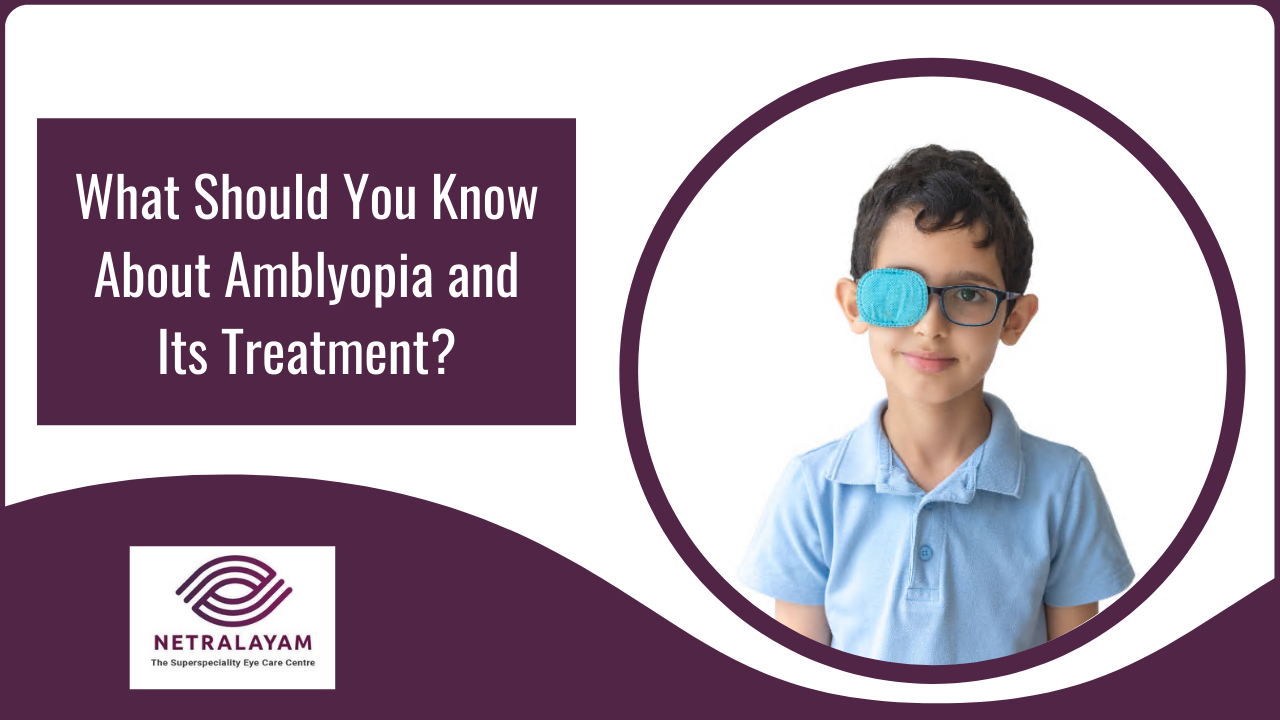Committed to Eye Care with Compassion, Technology and Competency
Committed to Eye Care with Compassion, Technology and Competency

5/19/2022
A person’s vision develops during the first few years of life. Hence, it is crucial to diagnose and treat various eye health conditions such as amblyopia as early as possible. If such a condition is left untreated for long, it will harm a person’s vision, leading to abnormal vision development or unhealthy vision.
Amblyopia (the medical term for a lazy eye) is an early childhood condition in which a child's eyesight doesn’t develop as it should in one eye. For a person suffering from amblyopia, the brain tends to focus on one eye more than the other while virtually ignoring the eye. The nerve cells responsible for the vision do not mature as they should if that eye doesn’t receive proper stimulation.
Amblyopia is considered one of the most common causes of partial or total blindness in one eye during childhood. If left untreated, temporary or permanent loss of vision can occur, including loss of both 3-D vision and depth perception. It's always advisable to visit the nearest eye hospital as early as possible if you suffer from this condition. Furthermore, it is important to remember that a lazy eye is not as same as a turned or crossed eye. That condition is known as strabismus, and it can lead to amblyopia if the crossed eye gets much less use as compared to the uncrossed one.
A lazy eye can be caused by anything that obstructs the vision in either eye during a child’s development. The brain tends to suppress the images coming from the eye most affected though the reasons for this are still unclear.
Some possible causes are mentioned below:
In case the light isn’t correctly focused as it goes through the lens of the eye, this can lead to refractive error. It occurs due to farsightedness, nearsightedness, or astigmatism, in which the surface of the lens or cornea is uneven, which further leads to blurred vision. If a child is suffering from anisometropic amblyopia, he/She will be more nearsighted or farsighted in one eye as compared to the other, which can result in amblyopia developing in the most affected eye.
This condition refers to the imbalance in the muscles that position the eye. This can cause the eyes to turn out or cross. This muscle imbalance also makes it difficult for the eyes to track objects together. A person may inherit strabismus that results from a viral illness, injury, farsightedness, or nearsightedness.
See Also: How to Deal with Squints (Strabismus): Causes, Symptoms, and Treatment
Stimulus deprivation amblyopia
This is the least common type of amblyopia in which something can prevent the eye from seeing that cause it to become weaker. In most cases, both eyes can be affected. Stimulus deprivation amblyopia could be due to many reasons like:
Signs and symptoms of amblyopia can include:
The most effective way to treat amblyopia is to treat the underlying eye conditions. Early treatment options are easy and may include contact lenses, eyeglasses, eye drops, eye patches, or vision therapy. The outcome of the treatment becomes better if done at the earliest. Furthermore, recovery may be possible if the lazy eye treatment for adults is done at the earliest.
It is important that your child gets his/her routine eye check-ups even though amblyopia affects only a small proportion of children. This way, the doctor can treat amblyopia or any other eye condition.
Are you looking for lazy eye treatment for adults or lazy eye surgery near me? Then contact us at Netralayam. We are one of the best eye hospitals in Kolkata, and we can provide you with the finest medical care and services. Call our medical team to know more.
Comments are closed
